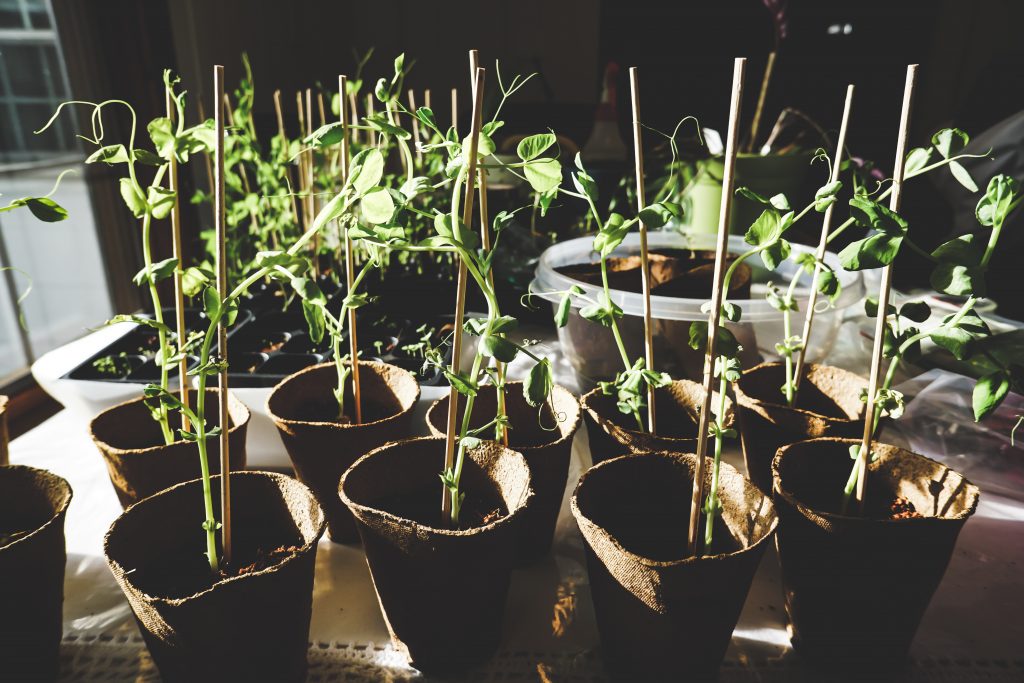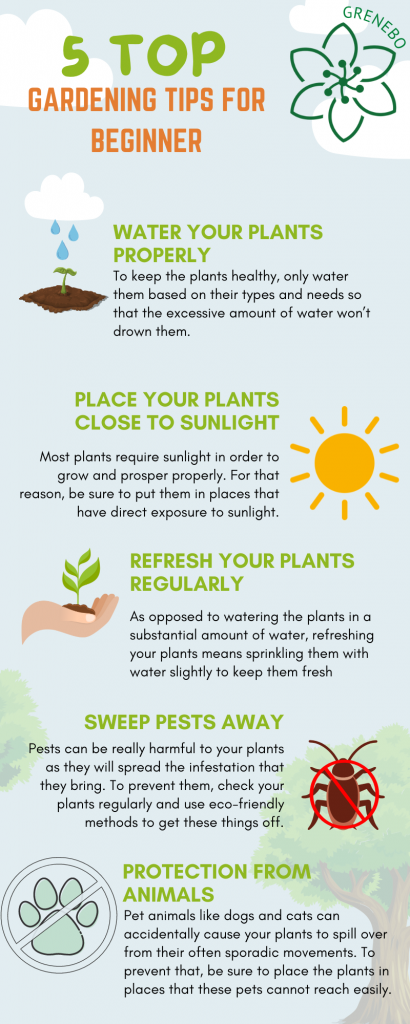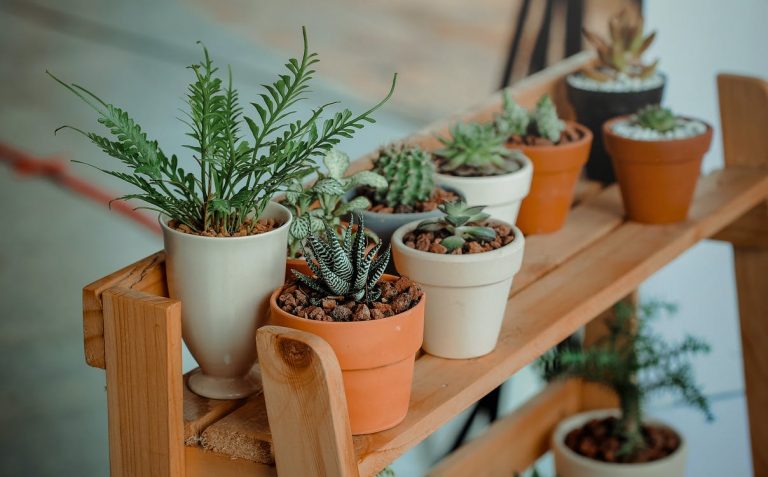STEPS TO START YOUR FIRST GARDEN OFF
It’s the beginning of spring, and you’re thinking about what you want to grow in your garden this year. If you’ve never grown a garden, it can be challenging to know where to start.
Don’t worry, though—there are a lot of steps you can take to get your first garden up and running successfully. Let’s walk through them once, so you have a solid understanding of how to plan for a successful garden.

Here are some tips for starting your first garden.
STEP 1:DECIDE WHAT YOU WANT TO GROW
Choosing what to grow is the first step in getting your garden off the ground. There are a lot of decisions to make, not the least of which is determining what you want to grow. The more specific you are, the better. Do you want to grow ornamentals? Do you want to grow vegetables? Do you want to grow perennials or annuals?
Gardens Have Three Types:
Herb Gardens
These are already popular and can be done anywhere, but they’re not very productive. The best spot for this is a sunny south-facing window. The plants need light and lots of moisture, so try to keep the potting soil as long as possible instead of letting them dry out in a sunny window.

Kitchen Gardens
It is designed for people who enjoy growing their food but might not have enough space or time to do everything by themselves. They usually include herbs and tomatoes, but they can vary widely depending on the size of the space available and the person’s tastes.
Vegetable gardens
Designed to grow food for you and your family to eat. The vegetables (or fruits) are usually eaten fresh but can be preserved using canning, freezing, or dehydration.
This type of planting primarily consists of annual plants, which live for one growing season and then die. This type of garden may also include some perennial plants that come back year after year.

STEP 2: PLAN YOUR LAYOUT
Planning your garden layout is one of the most important steps for a beginning gardener. Why? Because a good plan will save you time and money, ensure you have a successful growing season, and give you the satisfaction of enjoying a well-thought-out garden from the beginning.
There are three main things to consider when planning your garden:
Location & space
There are many factors to consider when deciding where to plant your garden. You want a sunny spot if possible (most plants need at least 6 hours of sun). A level spot is better than a sloped one–your plants won’t roll away when you water them. If you have the option, planting near your kitchen ensures that it’s easier for you to remember to go out and water your new babies daily. Finally, if possible, place your garden close to a hose or some other easy water source so that you don’t have to run back and forth from the kitchen with a watering can.

Plants
Now you can decide what to grow. Some plants are easier for beginners than others, so consider those. If you live in a colder part of the country, start with hardy vegetables like lettuce and radishes that can be grown in early spring before the weather gets too hot. In warmer climates, choose plants that do well during hotter times of the year such as summer squash, beans, and tomatoes.
Then think about how you will use your garden space. Many flowers attract bees or butterflies to help with pollination. You may also want to add shrubs or small trees around your garden for shade or privacy from neighbors. Annuals generally don’t last long but they add color every year; perennials last longer and often return after dying back each winter with new growth during springtime when temperatures rise again.

Tools
Buy gardening tools and supplies. To take care of your garden throughout the growing season, you’ll need the proper equipment.
Gardening can be both a peaceful and rewarding activity. If you’re a newbie, it might also be rather expensive. Buying these gardening items one by one might be a costly and time-consuming undertaking. We’ve simplified the process of getting you started in gardening and added extra goods that most other retailers don’t offer in their bundles.
We recommend that you get Grenebo Gardening Tool Set: 9-Piece Heavy Duty Gardening Tools from Amazon!

This stainless-steel gardening toolset is made of high-strength SK-5 carbon steel, making it durable and rust-proof. Grenebo gardening tools are sold in a set of nine components, each with its storage bag. It includes the Essential Gardening Tools for Beginners.
By purchasing this basic gardening equipment, you can ensure that your shed has all it needs to keep your garden looking great and flourishing.
STEP 3: PREPARE AND TEST YOUR SOIL
Soil pH is the measure of acidity and alkalinity in the soil. It is expressed on a scale that ranges from 1 to 14, with 7 being neutral. Soils with a pH below 7 are considered acidic, whereas soils above 7 are considered alkaline. Testing your soil’s pH level will help you determine what plants will thrive in it. Most garden vegetables grow best in soils between 6 and 6.5—but you shouldn’t just take our word for it! Pick up a soil test kit at your local hardware store and do it yourself; most kits will cost under $20.
Once you’ve read the results of your soil test, make sure to follow any recommendations for adjusting the pH level (if necessary). If your soil is too acidic or too alkaline, most plants won’t be able to absorb nutrients from it properly—and nutrient deficiency can affect growth over time. Adding lime or sulfur are two of the most effective ways to adjust your soil’s pH level so that it’s optimal for gardening success!

STEP 4: SET UP A WATERING SYSTEM
Many of us have been talking about getting into the garden lately. This is a great way to get some fresh air, exercise with your pet, and save some money on your grocery budget. But first, we’ve got to think about all of our bases.
Set up a watering system – The first thing you need is an automated watering system. An automatic drip irrigation system is probably the easiest way to go, simply because most people already have one in their homes or places like apartment buildings. There are tons of different options out there for a variety of budgets and styles; check online for ideas or find them at a store nearby you to try out before you purchase.
Soaker hose – Next, you need to have an irrigation line. Again, there are many options out there from simple plastic tubing to more elaborate metal hoses that are heavier duty and can be found at hardware stores as well as home improvement stores like Home Depot or Lowe’s. The first time we were looking around at drip systems I was confused by all the different types of hoses; so, after comparing prices we decided on a soaker hose that included everything needed including stakes which helped make things easy during installation since our yard wasn’t exactly flat and level!

STEP 5: ELIMINATE PESTS
Your garden is a tempting delicacy for gnawing critters, so you’ll need to protect it. If you have pets, fencing off your plot can keep them out of your garden. If you don’t have pets, chicken wire or raised beds are easy barriers against animals. If all else fails, humane traps and deterrents may be necessary if they’re getting through all other attempts at keeping them away from your plants.
STEP 6: HARVEST AND ENJOY!
It’s time to harvest and enjoy your first garden. For many, it’s been a long wait. But the payoff can be great, especially if you have planted a good mix of vegetables and some herbs to enhance the flavor of your food.
If you’re new to gardening, don’t be surprised by what might appear to be small harvests at first. Many first-time gardeners are disappointed when they find little food for their efforts.

Gardeners need patience and skill to make their gardens productive. It takes most people more than one year to get it right, but many gardeners don’t have the patience or skills they need. The plant has too much of one vegetable or not enough of another vegetable that their family likes to eat, without realizing that some plants take more care than others and aren’t as productive.
The key is to start small — with just one or two plants — then expand over time as you gain knowledge and confidence.

That said, gardening can be great fun (especially as you begin to reap the rewards), and it’ll help you grow your food bills down in the long run. Your first garden can be a challenge no matter what.
We hope that this article has helped decide how and where to begin, and also provided you with good pointers to go on your gardening journey. If you seek out other sources as well, you should have all you need to get started. So put on your gardening gloves, grab the wheelbarrow, and welcome to the wonderful world of garden maintenance.
Here are a few additional tips to get you on the right track:
Gardening 101: How To Start A Garden








